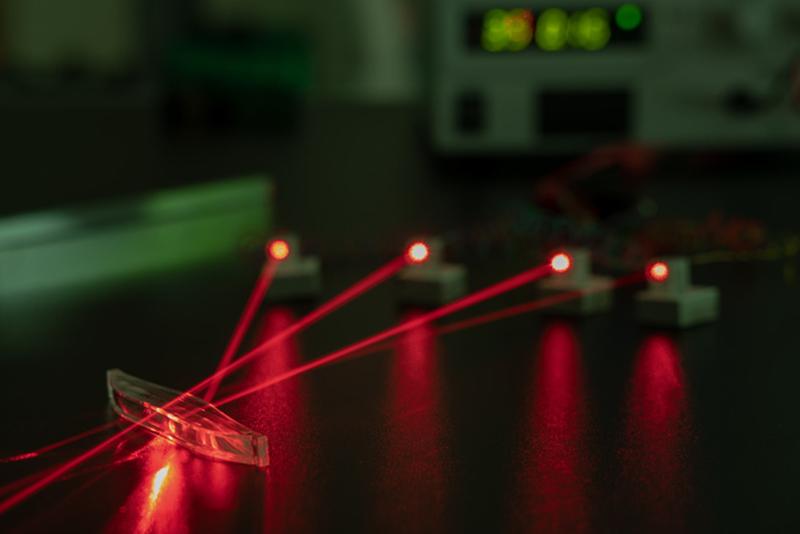4D printing adds new dimension to nanophotonics
4D printing of shape-memory polymers (SMPs) at sub-micron level could add a new dimension to the field of nanophotonics.

Researchers at the Singapore University of Technology and Design (SUTD) say that conventional 4D printing technologies, such as direct ink writing, polyjet, digital light processing (DLP) lithography and stereolithography (SLA) can only provide resolution at ~10μm scale.
‘We developed a SMPs photoresist and patterned it [using] two-photon lithography (TPL) and printed samples with line-width of ~280nm and 300nm half pitch,’ says Wang Zhang, lead author of the research. ‘This resolution is fine enough for nanophotonics. At this feature scale, the structure can interact strongly with light, producing different structural colours by adjusting the printing parameters such as laser power and write speed.’
The main part of the photoresist is made of Vero Clear, which is an optically transparent thermosetting polymer resin containing an acrylate functional group, Zhang explains.
To adjust the tensile strength, different concentrations of elastomers were added to the matrix, containing 2-hydroxy-3-phenoxypropyl acrylate (HPPA) as monomer, Bisphenol A ethoxylate dimethacrylate (BPA) as crosslinker and diphenyl (2,4,6-trimethylbenzoyl) phosphine oxide (TPO) as a photo initiator.
Zhang explains that the 4D effect is achieved by deforming the sub-micron structure at a temperature higher than the SMP’s glass transition temperature (Tg).
‘While keeping the external load, the temperature is decreased to room temperature, which is lower than the material’s Tg. At room temperature, the load is released, and the deformed configuration is ‘frozen’, rendering the print ‘invisible’. The print finally recovers to its original geometry and colour when heated back to the high temperature, demonstrating the 4D effect.’
He continues, ‘To develop a SMPs photoresist suitable for TPL and has good 4D effect, we characterised the photoresist with a series of tests such as dynamic mechanical analysis, uniaxial tensile experiments and viscosity tests. With the characterised resist, we achieved the resolution required and structures that can switch between colourful and colourless within seconds, demonstrating the 4D printing for nanophotonics. Also, to understand the optical performance, we performed finite difference time domain to analyse the colour generated by the printed sub-micron structure.’
4D printing enables 3D-printed structures to change their configurations over time and is used in a wide variety of fields such as soft robotics, flexible electronics and medical devices.
‘4D printing brings together the design flexibility of 3D printing with stimuli-responsive properties of its constituent materials,’ says Zhang.
‘We demonstrated the concept of sub-micron-scale 4D printing of SMP with the application of multi-colour invisible inks by two-photon polymerisation lithography of the custom-tailored photoresist.
‘Due to the flexible tunability of the design variables by additive manufacturing, different colours can be easily obtained by varying the printing parameters such as laser power, write speed and nominal height of grids. The printed structures can switch colour stably and rapidly by the programming process.’
Zhang says that the resist’s resolution can be further improved by tweaking its composition, bringing it to the level of commercially available photoresists.
He explains, ‘In some situations where it is not very convenient, or even possible, to apply the load and heat needed for SMPs-based 4D printing, other methods to induce strain can be considered (e.g., voltage, light and magnetic field to achieve contactless and precise control of the programming).
‘Also, at the micron and sub-micron scale, mechanical tests should be implemented to understand the micromechanical behaviour of the print.’







